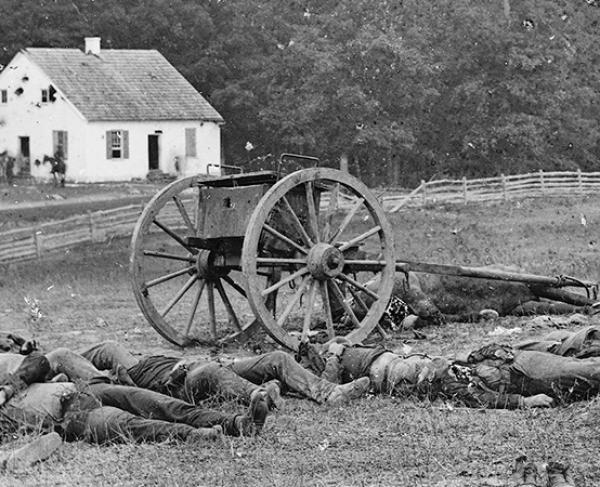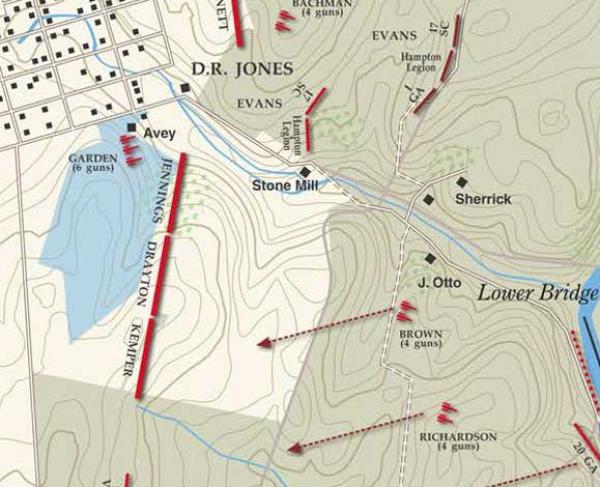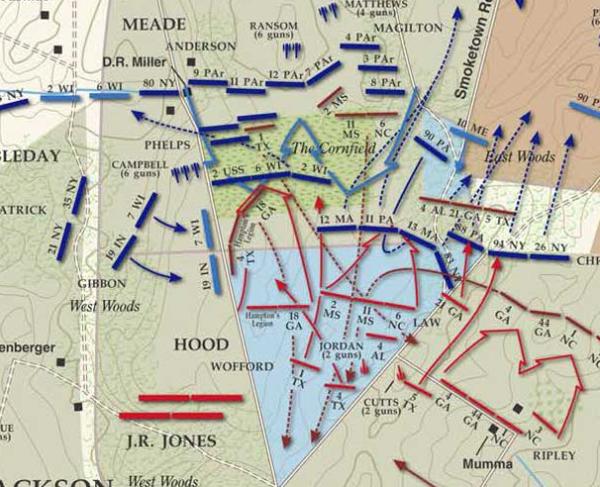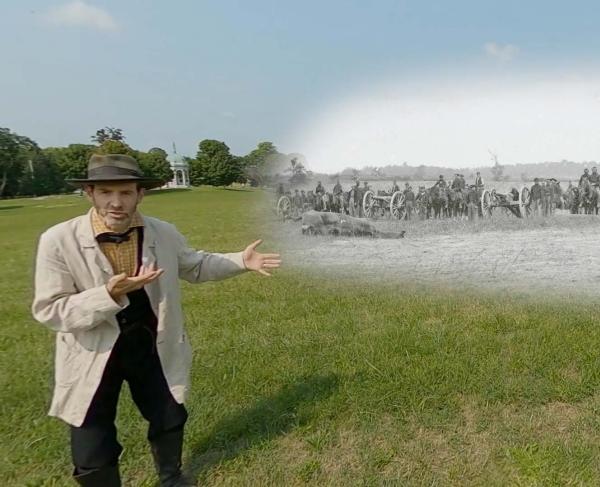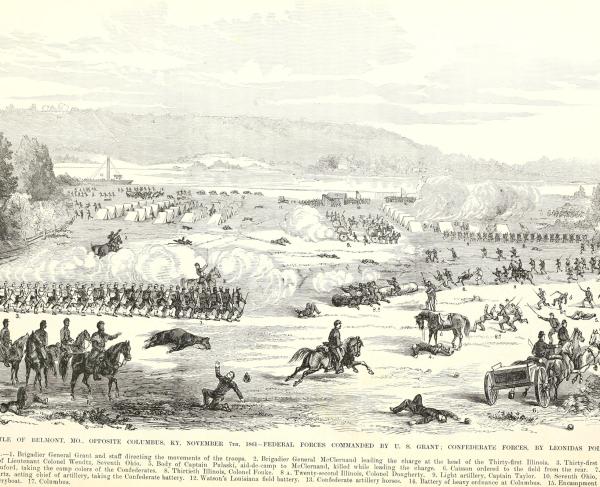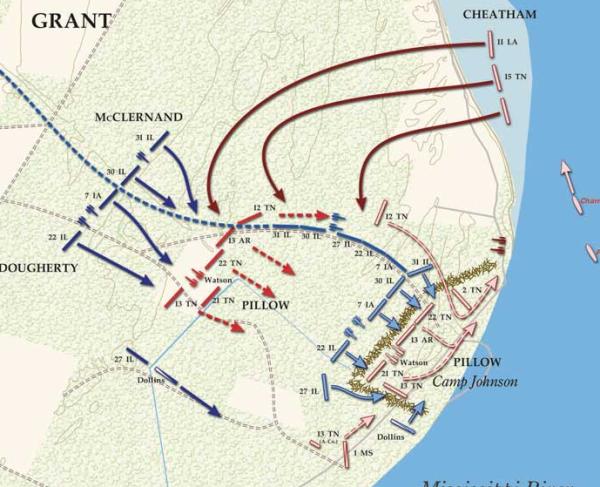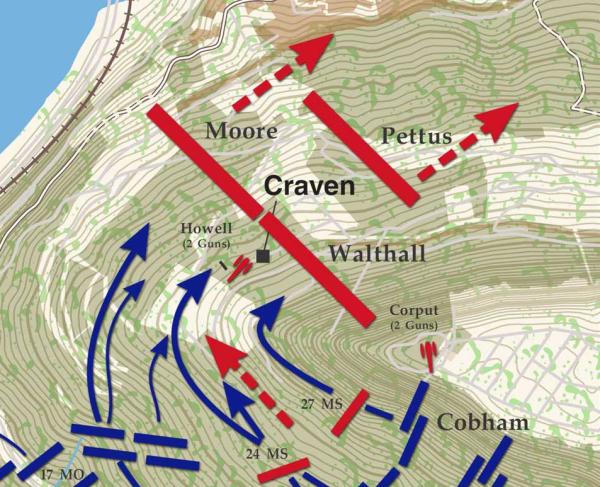Celebrate Victory Week 2023 with us!
Celebrating 441 Acres Saved Across Five Battlefields!
When the American Battlefield Trust claims “victory,” the term signifies the conclusion of our long and arduous process to save, and often restore, sacred battlefield acreage. From researching and confirming the historic actions that unfolded upon the pinpointed soil, to laying the legal groundwork and negotiating with landowners, to consulting local groups and decision-makers, to hunting down all possible funding sources and sharing preservation opportunities with essential donors like yourself, these victories are the product of several helping hands.
During its third Victory Week, which falls squarely within Historic Preservation Month, the Trust outlined the complexities of the “victory” process with its members — but also announced an impressive round-up of recent preservation victories. Composed of five battlefields in four states, the 2023 Victory Week declaration covers nearly 441 historic acres protected by the nation’s premier battlefield land preservation organization. This critical acreage covers three battlefields from the Civil War’s Western Theater, plus another two battlefields from the Eastern Theater. But across these various fields, similar themes are ingrained within the soil — driving all who visit this hallowed ground to consider the heartbreaking toll of war.
The September 17, 1862, Battle of Antietam remains the single bloodiest day in American history. Gen. Robert E. Lee committed his entire force to the battle, while Maj. Gen. George B. McClellan kept elements of his army in reserve. With the full commitment of McClellan’s troops, which outnumbered the Confederates two to one, the battle might have had a more definitive outcome. Instead, McClellan’s half-hearted approach allowed Lee to hold ground by shifting forces from threat to threat.
The battle was a draw from a military standpoint, and Lee’s army withdrew. For the Union, it showed that the Federals could stand against the Confederate army in the Eastern Theater. It also gave President Abraham Lincoln the confidence to issue the preliminary Emancipation Proclamation at a moment of strength rather than desperation.
Through a Trust grant to its longtime partner the Save Historic Antietam Foundation — with additional support supplied by the American Battlefield Protection Program — nearly an acre of hallowed ground was preserved in perpetuity in May 2022. Confederate artillery engaged in actions to repulse Burnside’s final attack upon this tract. It is also on, or very near, the location of Confederate Capt. J. B. Richardson’s 2nd Company, Washington Artillery of New Orleans. With the arrival of Maj. Gen. A. P. Hill’s Confederate division, the 28th North Carolina Regiment fought on the road in front of this parcel. The batteries to the left of Richardson were captured and Confederates driven across the road to the west side of the Harpers Ferry Road. But with the successful attack of Hill’s Confederate division, the Union was driven back to the east side of the road and the guns restored to position on the ridge located on this property. The Foundation is the current owner and steward of the roughly one-acre site.
As of May 2, 2023, the Trust has saved approximately 468 acres at Antietam.
Explore Antietam
Antietam | West Woods | Sep 17, 1862
Antietam | Burnside's Bridge | Sep 17, 1862
Antietam | Cornfield | Sep 17, 1862
Step Into History
Antietam | The Final Assault | Sep 17, 1862
Fought on November 7, 1861, the Battle of Belmont served as Brig. Gen. Ulysses S. Grant’s first test as a commander on the field when he responded to Confederate activity in Columbus, Ky. The two sides skirmished about one mile away from Confederate Camp Johnson until 2pm when Union forces established an upper hand. Soon after, Confederate forces retreated, and Union forces moved in and captured Camp Johnson.
Union forces began to celebrate the retreat by raiding the camp. But when the celebration became overexuberant, Grant ordered the camp to be set on fire to maintain order. Unfortunately, several wounded Confederates were severely burned and killed in the chaos. Believing these deaths to be intentional, Confederate reinforcements attacked Union forces as they marched back to Hunter’s Farm. After another skirmish, the Federals reached their waiting steamships and set sail back to Paducah, Ky. The battle ended inconclusively, although both sides claimed otherwise.
In December 2021, the Trust acquired one acre at Belmont, representing the Trust’s first preservation success at the battlefield. The property is adjacent to the Confederate Fort Quinby, and the area is thought to have been a cavalry camp. Built by the Confederates, the earthen Fort Quinby was later named by the Union army after their first commander at Columbus, Brig. Gen. Isaac F. Quinby. Later in the war, soldiers in the 4th U.S. Colored Heavy Artillery manned Fort Quinby. The Trust-saved tract is intended for transfer to Columbus-Belmont State Park.
A May 2023 Trust appeal seeks to expand upon this initial success and save more of Belmont’s hallowed ground.
Explore Belmont
Belmont | Nov 7, 1861
Belmont Battlefield
Following Union Maj. Gen. William Rosecrans’s defeat at Chickamauga on September 18–20, 1863, the Army of the Cumberland fell back to the high ground and rail hub at Chattanooga, Tenn. Confederate Gen. Braxton Bragg chose to besiege the Union forces entrenched around the city, hoping to starve them into surrender.
In October, Maj. Gen. Ulysses S. Grant was given command of all Union forces in the west and replaced Rosecrans with Maj. Gen. George Thomas. After securing the vital “Cracker Line” to feed his starving army, Grant turned his focus to a Union breakout on Lookout Mountain and Missionary Ridge.
The three-day Battles of Chattanooga, November 23–25, 1863, resulted in one of the most dramatic turnabouts in American military history. After their conclusion, the rivers, rails and roads of Chattanooga were firmly in Union hands, and the city was transformed into a supply and communications base for Sherman’s 1864 Atlanta Campaign.
In September of 2021 and 2022, the Trust protected two properties at Lookout Mountain in Chattanooga.
The first of the two is composed of nearly eight acres, with preservation made possible by the American Battlefield Protection Program and the Tennessee Civil War Sites Preservation Fund via the Tennessee Wars Commission. This property is part of the northeastern fourth of the area of the Federal crossing [of John Geary’s division] of Lookout Creek at Light’s Mill. This tract is opposite where Geary’s men constructed a foot bridge to cross the creek and climb the western slope of the mountain.
The second tract comes in at just under an acre. When Geary’s men swept up from the south and into the left flank and rear of the 34th Mississippi positioned above the bridge sites, this property was a corridor of retreat for some of these Confederates.
As of May 2, 2023, the Trust has saved roughly 405 acres at Chattanooga.
Explore Chattanooga
10 Facts: Battles for Chattanooga
Chattanooga | Lookout Mountain | Nov 24, 1863
The Battles of Chattanooga
The Battle of Mill Springs, fought on January 19, 1862, was one of the first significant Union victories of the Civil War. Brig. Gen. Felix Zollicoffer’s primary responsibility had been guarding the Cumberland Gap, but he instead advanced west into Kentucky in November 1861 to strengthen control around Somerset. Once there, he set up a fortified camp near Mill Springs.
Discovering that Zollicoffer had moved across the Cumberland River toward Mill Springs, Union Brig. Gen. George Thomas received orders to attack the Confederates under Zollicoffer and Maj. Gen. George Crittenden. After holding off several attacks, Thomas’s men were aided when Brig. Gen. Albin F. Schoepf’s men slammed into the Confederate right flank. The Confederates fled from the field and back to their fortifications at Beech Grove.
The Trust successfully saved three properties at Mill Springs, with two that have already been incorporated into the Mill Springs Battlefield National Monument.
The first of the three recently saved tracts consist of almost 93 acres where the 4th Kentucky and the 2nd Minnesota held off a Confederate charge from the 15th Mississippi and the 20th Tennessee. Here, the Confederate advance was halted, and the tide of battle shifted to the Federals under Brig. Gen. George Thomas. Previously used as a cattle farm, much of the land’s historic integrity was left intact.
Another approximate 83 acres were protected in September 2022, situated on the 1862 Confederate encampment at Beech Grove. The land includes the only intact Confederate earthworks and cannon emplacements on the battlefield — the last of the properties, at nearly 64 acres, expands the preservation of these same battlefield features.
Support for these efforts was provided by the American Battlefield Protection Program and the Commonwealth of Kentucky.
As of May 2, 2023, the Trust has saved about 769 acres at Mill Springs.
Explore Mill Springs
Mill Springs | Logan's Crossroads | Jan 19, 1862
10 Facts: Mill Springs
Mill Springs | Moulden’s Hill | Jan 20, 1862
The Battle of Upperville was one of a trio of cavalry engagements fought in Virginia’s Loudoun County. Two days after skirmishing with the Union cavalry brigade of Col. J. Irvin Gregg in and around Middleburg, Brig. Gens. Wade Hampton and Beverly Robertson’s brigades made a stand and beat back Brig. Gen. David McMurtrie Gregg’s division near a stone bridge over Goose Creek, four miles east of Upperville, on June 21, 1863.
Gregg called for infantry support and received the brigade of Col. Strong Vincent. Vincent’s men pushed the Confederate forces back, and his 16th Michigan Infantry captured an artillery piece from Maj. Gen. J.E.B. Stuart’s fleeing troopers. Brig. Gen. John Buford’s column detoured to attack the Confederate left flank north of Upperville but encountered Brig. Gen. William E. Jones and Col. John R. Chambliss’s cavalry brigades while two more Union cavalry brigades advanced on Upperville from the east along the turnpike. After furious mounted fighting, Stuart took a defensive position on Vineyard Hill in Upperville, as Lee’s Confederate infantry crossed into Maryland. As cavalry skirmishing around Upperville diminished, Stuart struck east and made a circuit of the Union army as it followed the Confederates toward Gettysburg.
The Trust provided funding for the placement of a conservation easement, conveyed by Kirkby Farms, LLC, on 190 acres at Upperville to the Old Dominion Land Conservancy. Northern and Southern cavalry brigades totaling about 6,000 men, with horse artillery supporting both sides, clashed all around and across the Kirkby farm on the afternoon of June 21, 1863. The historic Kirkby House still stands.
As of May 2, 2023, the Trust has saved approximately 1,004 acres at Upperville.

